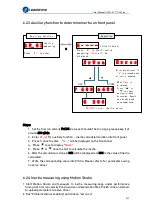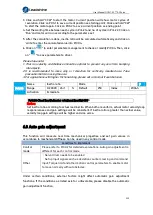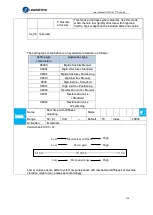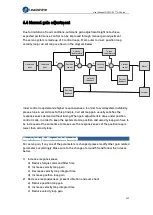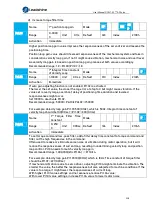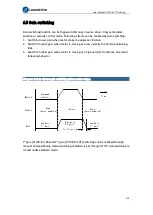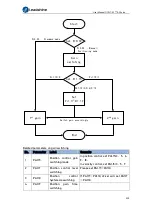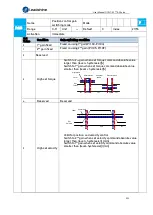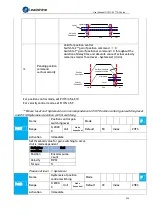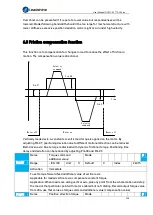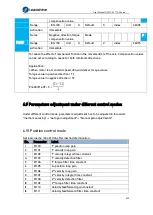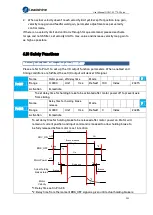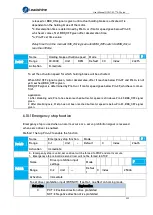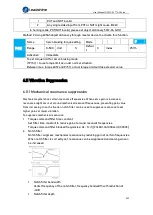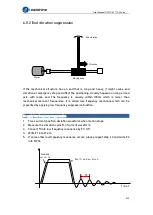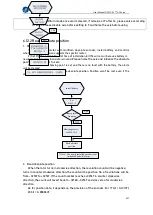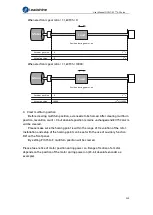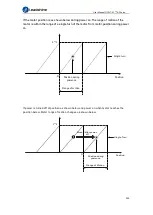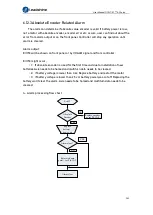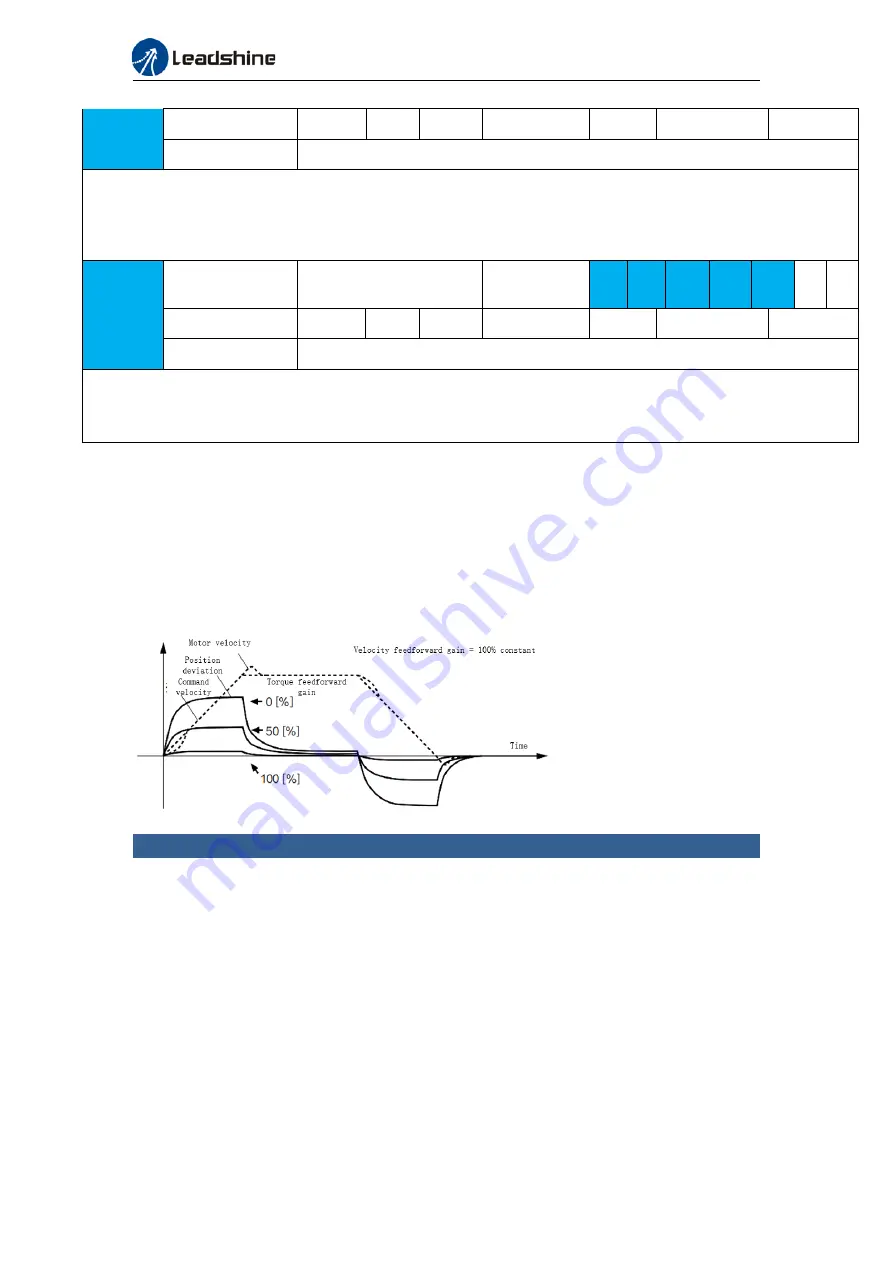
User Manual Of EL7-EC** AC Servo
226
Range
0~1000 Unit
0.1%
Default
0
Index
2112h
Activation
Immediate
Before using torque feed forward, please set correct inertia ratio. By increasing torque feed
forward gain, position deviation on constant acceleration/deceleration can be reduced to close
to 0. Under ideal condition and trapezoidal speed profile, position deviation of the whole motion
can be reduced to close to 0. In reality, perturbation torque will always exist, hence position
deviation can never be 0.
Pr1.13
Name
Torque feed forward
filter time constant
Mode
PP PV HM
CS
P
CS
V
Range
0~6400 Unit 0.01ms Default
0
Index
2113h
Activation
Immediate
Low pass filter to eliminate abnormal or high frequencies in torque feed forward command.
Usually used when encoder has lower resolution or precision.
Noise reduces if torque feed forward filter time constant is set higher but position deviation will
increase at acceleration varied points.
6.6.4 Torque feedforward application
Set Pr1.13 to around 50 (0.5ms), then tune Pr1.10 from 0 to bigger values until torque
feedforward achieves better performance. Under constant acc-/deceleration, the
position deviation in a motion will decrease as the velocity feedforward gain increase.
Steps to tuning:
2.
Increase Pr1.12 to increase responsiveness but velocity overshoot might occur
during acc-/deceleration.
3.
By reducing Pr1.13, torque feedforward would be more effective and vice versa.
Pr1.12 and Pr1.13 need to be tuned to a balance and reduce noise.
6.7 Model following control
Model following control is a type of closed loop control system. First, an ideal model is
constructed and acts as a reference for actual model in a closed loop control. Model
following control can be treated as a control mode with 2 flexibilities: Reference model

